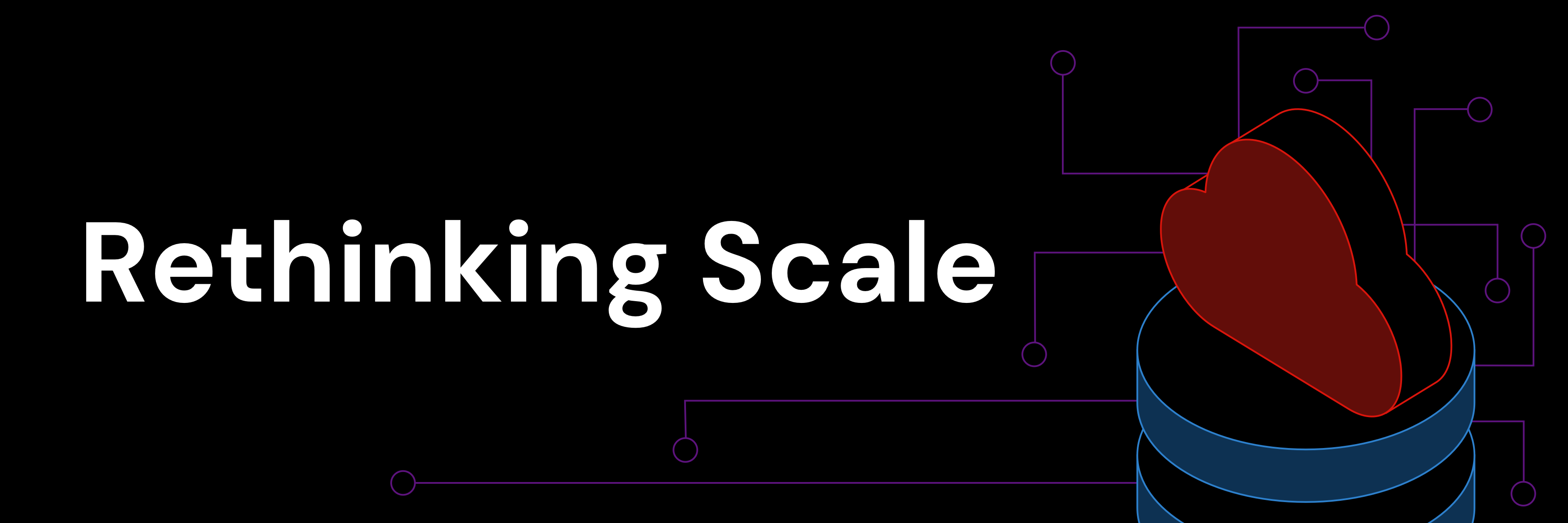
Serverless computing and serverless databases. Both terms have achieved buzzword status in recent years. What do they mean, exactly?
In the simplest terms, serverless computing refers to a model where developers can build and run applications without thinking about the underlying infrastructure. There is no need to worry about determining the number and sizes of machines. The cloud provider automatically handles the setup, maintenance, and scaling of the infrastructure. This allows developers to focus on code. The serverless model revolutionizes modern application development, making processes more streamlined and efficient. But what if we took this concept and applied it to databases?
This article provides a comprehensive understanding of serverless databases. We’ll start by defining what this type of database is, its key features, and how it differs from traditional databases. From there, we’ll explore the benefits of using serverless databases, including cost efficiency and scalability. We’ll also delve into real-world use cases to demonstrate the practical applications of this technology.
Defining Serverless Databases
A serverless database is, in essence, a cloud-based database service that automatically manages the underlying infrastructure, such as servers, storage, and networking. This means application developers do not need to worry about provisioning, scaling, patching, or maintaining infrastructure. They can focus on building and deploying applications in an environment that automatically manages the underlying infrastructure, such as servers, storage, and networking.
Key features include:
- Instant and automatic scaling based on workload.
- Serverless databases automatically scale up or down based on demand. This eliminates the need for application developers to provision and manage resources manually.
- Pay-as-you-go pricing.
- Serverless databases are typically billed on a pay-as-you-go basis. This means that application developers only pay for the resources their applications use, which can save money on idle resources.
- Built-in high availability and fault tolerance.
- Serverless databases are most often hosted in the cloud and use the latest security features to protect their data. This reduces the risk of data breaches and other security issues.
The main distinction between serverless and traditional databases lies in database management. Traditional databases often require dedicated teams to size, deploy, install software, configure software, manage, maintain, and scale, whereas serverless databases largely eliminate this need.
Benefits of Using a Serverless Database
There are many benefits to using a serverless database.
- Reduced Costs: Serverless databases can help application developers reduce costs by eliminating the need to purchase and maintain their own infrastructure. With the pay-as-you-go model, you’re only charged for the actual resources your database consumes. This means that you are not charged when there is no activity on the database.
- Improved Performance: These types of databases can automatically scale up or down based on demand. This dynamic scaling ensures optimal performance without manual intervention. This makes serverless databases perfect for production work.
- Increased Agility: With most of the administrative tasks being handled automatically, application developers can focus on more strategic initiatives.
- Enhanced Security: Cloud providers invest heavily in securing their platforms. Automated backups, encryption over the wire, data encryption, and advanced threat detection are typically included in serverless database offerings.
Serverless Database Use Cases
There are many great use cases for serverless databases. Let’s keep it simple and discuss four of them:
- Prototype Testing: Set up databases effortlessly for transient projects or tests without long-term commitments. There is no need to invest time sizing (vCore, RAM, or storage) your database before beginning your project. In addition, you don’t waste time setting up physical machines or configuring obscure operating system settings. This means you can get started quickly, learn as you go, and scale as you grow. This makes serverless databases a perfect option for start-ups who need to quickly validate their business ideas without investing too much in the data infrastructure or worrying about scalability.
- Automatic Web App Scaling: Web app usage is becoming more unpredictable. The ability to dynamically scale is paramount. Using a serverless database ensures that your website or app can handle huge increases in data requests. This happens automatically. This ability makes these types of databases perfect for production applications. Explore this user case to learn how a Web3 infrastructure company uses a serverless database to build a data-sharing platform.
- CI/CD Practices: The principles of continuous integration and deployment resonate well with the adaptability of auto-scaling databases. Integrating serverless databases into CI/CD pipelines can streamline development and deployment workflows, ensuring consistent performance and reduced deployment risks.
- Workload Consolidation: Serverless databases allow organizations to efficiently merge multiple low-usage workloads into one unified environment. This is especially beneficial for SaaS providers with multi-tenancy models.
Comparing Serverless Databases
So far, we have learned the basics. However, with many options available, how does one navigate the world of serverless databases? In this section, we’ll delve into various categories of serverless databases and then explore the critical properties to consider when selecting the right one for your needs.
Serverless databases, like traditional databases, can be grouped into various categories based on use cases and the data models they support. Here is a brief overview of serverless database categories:
Main Categories of Serverless Databases
- Relational Serverless Databases: These databases store column and row structured data and use SQL as their primary query language. Examples include TiDB Cloud Starter and AWS Aurora Serverless.
- NoSQL Serverless Databases: Non-relational databases that can store and retrieve data in ways that don’t involve tabular relations. Document-based, key-value stores and graph databases belong to this category. Examples include Azure Cosmos DB and MongoDB Atlas Database.
- Time Series Serverless Databases: Optimized for time-stamped data and are great databases for tracking changes over time. Examples include InfluxDB Cloud.
There are a few other categories, such as serverless document databases and serverless graph databases, but you get the idea. It is important to choose the serverless database that addresses your specific use case.
Choosing the Best Serverless Database Solution
With the above database categories in mind, what should you consider when choosing a Serverless database for your project? Let’s explore the essential factors to consider when selecting a serverless database for your project.
Suitability
Should you choose a general-purpose database or a highly-specialized one? A general-purpose database may help you simplify your technology stack, while a specialized one adds complications. Consider factors such as scalability, performance, complexity, and the technical needs of your project.
Scalability
Distributed databases have a clear advantage over traditional databases. Scaling is as simple as adding or removing compute nodes. Remember that we are talking about Serverless environments here; this will be transparent to you, and you won’t have to worry about it because it is handled automatically. So, if scalability is important to you make sure you choose a Serverless environment based on a distributed database.
Database Upgrades
There will be a time when the database vendor must upgrade your Serverless database. There is no way around it. You want to ensure the vendor uses a rolling upgrade model. Rolling upgrades mean the underlying machines are upgraded one at a time so that your application experiences no downtime. These non-disruptive upgrades ensure your application will be there when your users need it.
MySQL Family of Databases
If you are replacing a MySQL database, ensure that your Serverless database is a part of the MySQL Family. The MySQL Family shares a consistent client protocol and SQL dialect. This means it is very easy to incorporate your new Serverless database into your existing ecosystem.
Vendor Lock-in
Consider the vendor lock-in implications of choosing a particular serverless database offering. Some serverless databases are more vendor-locked than others.
Community Support
Consider the size and activity of the community for a particular serverless database offering. A large and active community can be a valuable resource for troubleshooting problems and learning how to use the database effectively.
For an in-depth comparison of serverless databases (TiDB, MongoDB, Amazon Aurora, CockroachDB, and DynamoDB), from features to pros and cons, refer to this enlightening article from DZone. This can be your compass in selecting the serverless database that best meets your needs.
Conclusion
Serverless databases herald a new era in IT – one characterized by simplicity, automation, and efficiency. As our digital demands surge, the need for agile backend systems becomes paramount. With their many advantages, serverless databases are poised to become a game changer.
TiDB Cloud Starter encapsulates the best of this innovation, offering a blend of scalability, cost-efficiency, ease of use, and seamless integration – all in one package.
Intrigued? Explore TiDB Cloud Starter for a seamless transition into the world of serverless databases.
TiDB Cloud Dedicated
TiDB Cloudのエンタープライズ版。
専用VPC上に構築された専有DBaaSでAWSとGoogle Cloudで利用可能。
TiDB Cloud Starter
TiDB Cloudのライト版。
TiDBの機能をフルマネージド環境で使用でき無料かつお客様の裁量で利用開始。



